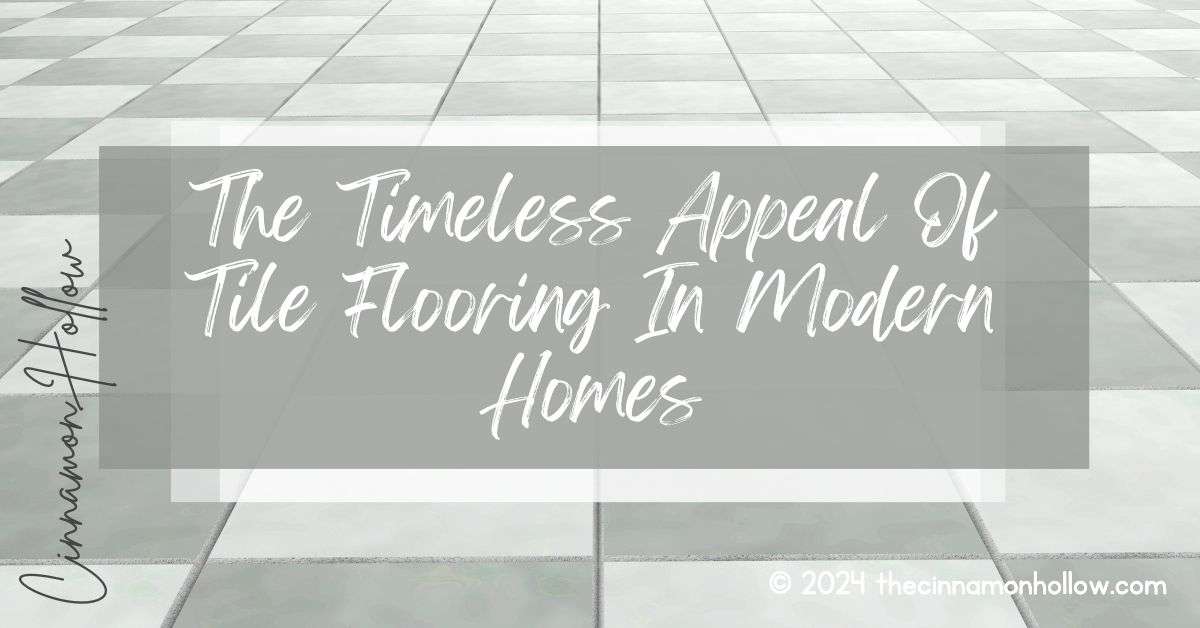Benefits of Tile Flooring
Modern homeowners have various options, but tile flooring remains popular due to its numerous benefits. One notable advantage is its durability. Because tiles are resistant to moisture and stains, they are ideal for high-traffic areas like kitchens and bathrooms. For those considering tile flooring installation, there’s an additional allure: the vast range of design possibilities. From intricate patterns to simple elegance, tiles offer endless customization options.
Another significant benefit is the ease of maintenance. Tiles repel dirt and allergens, making them a preferred choice for individuals with allergies. Moreover, they can stay looking new for many years with minimal upkeep. Tiles don’t need specific cleaning agents or solutions, unlike wood or carpet.
Additionally, tile flooring is highly resistant to wear and tear. Pet claws, spilled liquids, or heavy foot traffic challenge it. This resilience makes tile the perfect choice for both residential and commercial spaces.
Types of Tile Flooring
- Ceramic Tiles: Known for their versatility and cost-effectiveness. Ceramic tiles come in an array of colors, styles, and finishes. They are relatively easy to install and can be used for floors and walls.
- Porcelain Tiles: Denser and more water-resistant than ceramic tiles. Ideal for bathrooms and kitchens, even in areas prone to moisture. Porcelain tiles are extremely durable and can mimic the look of natural stone or wood.
- Natural Stone Tiles: Includes marble, granite, travertine, and slate, each offering a distinct look. These tiles provide a unique, high-end aesthetic but often require more maintenance to keep them pristine.
- Glass Tiles: Popular for backsplashes and decorative features. Due to their reflective properties, they can make a space feel larger and more open. However, they are typically reserved for accent areas rather than entire floors due to their fragility.
Choosing the Right Tile for Your Home
Selecting the right type of tile involves considering the room’s function, design aesthetics, and personal preferences. For instance, Architectural Digest suggests that homeowners should prioritize durability for high-traffic areas and opt for water-resistant options for spaces prone to moisture.
When choosing tile, experts from Naperville, IL, emphasized considering the room’s overall design. You might select large-format tiles with a minimalistic design for a modern look. In contrast, smaller, patterned tiles can add character and charm to traditional spaces.
Beyond aesthetics, practical considerations such as slip resistance and ease of cleaning should guide your choice. For instance, a textured tile might be better for a bathroom floor to prevent slips, while glossy tiles could be perfect for a kitchen backsplash for easy cleaning.
Installation Tips
Proper installation is crucial for maximizing the lifespan and appearance of tile flooring. With a few handy tips, homeowners can hire professionals or undertake the project themselves. First, ensure the subfloor is clean, dry, and level. Use a high-quality adhesive and grout to prevent future issues.
Measure the area carefully and purchase slightly more tile than necessary to account for cuts and potential breakage. Lay out the tiles before adhering them to get a feel for the pattern and make adjustments as necessary.
Utilize spacers to ensure even gaps between the tiles, which will later be filled with grout. After laying the tiles, allow ample time for the adhesive to cure before applying grout. This step is critical for ensuring the tiles remain securely in place.
Maintenance and Durability
Although tile flooring is known for its longevity, maintaining it properly is necessary to keep it looking its best. Routine mopping and cleaning with a light detergent can avoid stains and dirt accumulation. Additionally, sealing the grout periodically will help protect against moisture and extend the life of your tile flooring.
Avoid harsh chemicals that can damage tile and grout. Instead, opt for pH-neutral cleaning solutions that will keep your floors sparkling without harming them.
Pay special attention to high-traffic areas and address spills immediately to prevent stains. Placing mats at entry points can also help reduce the amount of dirt and debris tracked onto your tile floors.
Environmental Impact of Tile Flooring
Tiles are an environmentally friendly flooring option. Many tiles are made from natural materials and can be recycled at the end of their lifecycle. Moreover, their durability means they must be replaced less frequently than other flooring types, reducing waste and resource consumption.
Many manufacturers now offer eco-friendly tiles made from recycled materials. These tiles reduce the demand for virgin materials and help keep waste out of landfills.
Furthermore, tile flooring can improve indoor air quality, as it does not harbor allergens, mold, or dust mites. This makes tiles an excellent choice for health-conscious homeowners.
Cost Considerations
The cost of tile flooring can vary widely based on the tile type and the complexity of the installation. While natural stone and designer tiles can be expensive, more affordable options like ceramic are available. Budgeting the material and installation costs is important when planning your project.
Comparing prices and getting quotes from multiple suppliers can help you find the best deal. In addition, consider the long-term savings associated with tile flooring’s durability.


